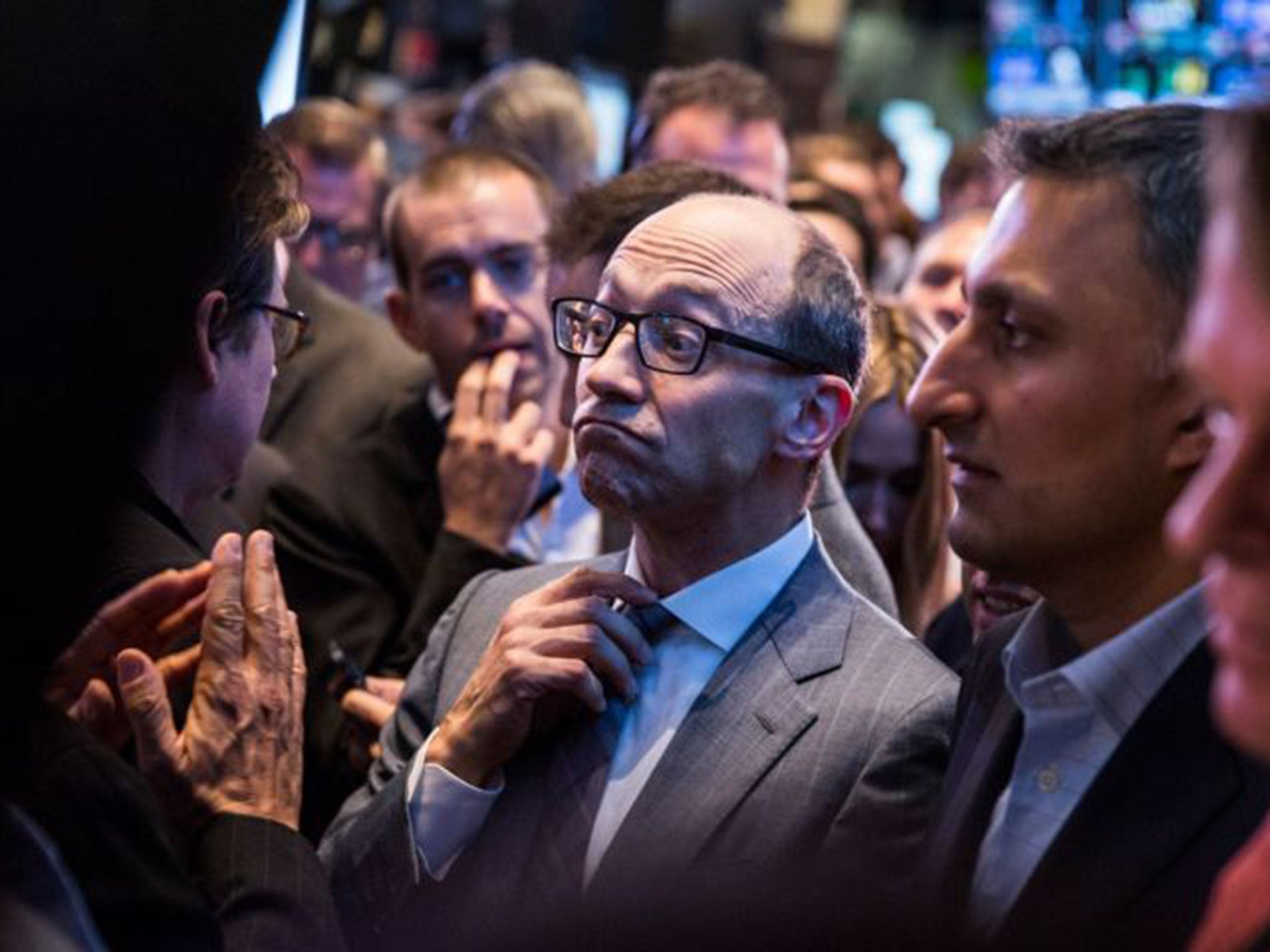Caged bird: what Twitter needs to do now to get back on song
As its chief executive departs, the site faces a defining challenge

Twitter’s share price proved to be the most reliable indicator of what investors want from Jack Dorsey as he returns as chief executive of Twitter, following the news that Dick Costolo will step down from the post on 1 July.
Its shares jumped 7 per cent to $38.45 in after-hours trading following Mr Costolo’s resignation announcement, but they were just 1.2 per cent higher yesterday afternoon in New York after Mr Dorsey stated that there would be no change in strategy.
Changes in management are not new at Twitter. Mr Dorsey co-founded Twitter in 2006 and left two years later. He returned for a brief period in 2011, then left again to concentrate on his mobile payments business, Square. Now, as interim CEO, he is expected to stay at the helm only as long as it takes to find a replacement.
A different management strategy, focusing on transparent decision-making and steady growth, would mark a change. Ever since Twitter went public in November 2013, investors have looked for reassurance that the business can start to turn a profit. A shaky first quarter, missing revenue expectations by $20m (£12.8m), started the rumblings that Mr Costolo had to go.
Shareholder frustration is an added pressure for Twitter’s leadership as it works out what Twitter should become. Brian Wieser, a senior media analyst at Pivotal Research Group, said: “What investors generally failed to understand about the company – and perhaps what management failed to fully communicate since the time of its IPO – was that Twitter was and remains a venture-stage enterprise. It just happens to be traded publicly.”
Twitter has 300 million monthly active users, about the same as the photo sharing network Instagram. Both are dwarfed by Facebook’s 1.4 billion monthly users. Over the past year, Twitter’s growth has been outpaced by smaller sites such as Pinterest and Tumblr – leading some to believe advertisers could take their social media budgets elsewhere.
Jefferies analysts said investors’ biggest questions centred on Twitter’s growth potential. “Twitter’s next CEO should focus on using key assets as avenues to drive new user growth and convert logged-out users into logged-in users,” they said. Those assets include Periscope, a live video app service; a new search deal with Google; homepages for users who aren’t logged in; and instant timelines that automatically display tweets matching a user’s interests.
Not everyone agrees that user growth is key. Richard Windsor, a technology analyst at Edison Investment Research, said the biggest problem was that Twitter served only a limited function for internet users. Edison research suggests that users spend just 9 per cent of their browsing time on Twitter because it has no service for other online activities such as emailing and gaming. “For Twitter, the monetisation opportunity is fundamentally limited unless it can spread its wings wider and encourage users to spend more time in its services,” Mr Windsor said.
“I think what Wall Street wants is a pipe dream: for Twitter to turn into another Facebook,” the technology blogger and The Talk Show host John Gruber wrote. “No CEO is going to make that happen. Maybe someone else will do better, but I think Costolo started with a hand dealt from a stacked deck.”
His resignation – and Mr Dorsey’s insistence that his tenure as chief executive is only until the board can find a permanent replacement – will do little to reassure investors that Twitter is not “the clown car that fell into a gold mine”, according to Mr Wieser at Pivotal Research.
Subscribe to Independent Premium to bookmark this article
Want to bookmark your favourite articles and stories to read or reference later? Start your Independent Premium subscription today.

Join our commenting forum
Join thought-provoking conversations, follow other Independent readers and see their replies